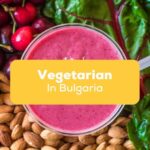What’s the first thing that comes to your mind when you think of the country Korea? Is it k-pop or k-drama that your friends cannot stop obsessing over? Korean culture has much more to offer than TV shows and music. As you all would know, Korea was separated into two parts, North Korea and South Korea. North Korea might be the hostile brother and a hot topic for many reasons recently, but we are here to talk about the dialects of South Korea. So let’s dive right in!
Dialects Of South Korea
Dialects of a language are a beautiful part of the culture that differ by region with diverse sounds and emotions. They persuade the listener about the region’s heritage and culture and display unique words and accents exclusive to the city.
These variations can often confuse the listener as they are different from the standard Korean dialects. Nevertheless, dialects of a region are proudly owned by the inhabitants of that region, are a big part of Korean culture, and emphasize the diversity of Korean people.
Formal and even informal versions of the Korean language differ from one another. In addition, you may also find Korean slang words, which may make it harder to understand the language.
Before getting into the details of the dialect, it is also important to know about the Korean language and its brief history.
Brief History Of The Dialects
The origin of the Korean language is misunderstood and dates back to the stone age. It probably belongs to the Altaic languages (Altaic languages family includes Chinese, Japanese, Mongolian, and Turkish).
Korean got influenced by many languages, and by the fifteenth century, it became the old Korean language coined by the people who used to live in the Korean peninsula.
Chinese characters called “Hanja” have been used in the region since the first century. They were adopted from the Chinese language as means to write Korean. These Chinese characters were still in use until 100 years ago, and then it got replaced by the Hangul system of the Korean alphabet. Even today, Hanja could be seen being used in official documents.
The Korean writing system used nowadays, called the “Hangul,” was created in 1443 by King Sejong (One of the greatest monarchs of the Yi Dynasty). There are 10 vowels and 14 consonants in the Hangul writing system. These are then combined to form words. Learning the letters and sounds is relatively easy and does not take much time.
How Was The Literature Before Dialects?
The most impacted part of the language after evolution is the literature. Before the introduction of Hangul, all the literature and writings were in Chinese letters.
So before introducing the revolution to the Korean language, all the Korean literature was in the Chinese language before the rule of King Sejong. After this, the literature started to be written in Hangul.
Resemblance With Other Languages
Korean culture is closely related to and influenced by the Japanese, and Chinese culture has influences from it. The Korean language is no different and shares many similarities with the Japanese and Chinese languages. They are both similar in terms of sentence structure and grammar.
Korean is written by a system called “Hanja,” which is not used in Japanese. The Japanese language uses a system called “Kanji,” which is adopted from the Chinese language. The Chinese language has a heavy influence and has many words similar to Korean in writing, but they have different tones.
Nowadays, in the modern-day version of Korean called “Konglish,” there are words adopted from both English and German languages.
Are South Korean And North Korean Dialects Different?
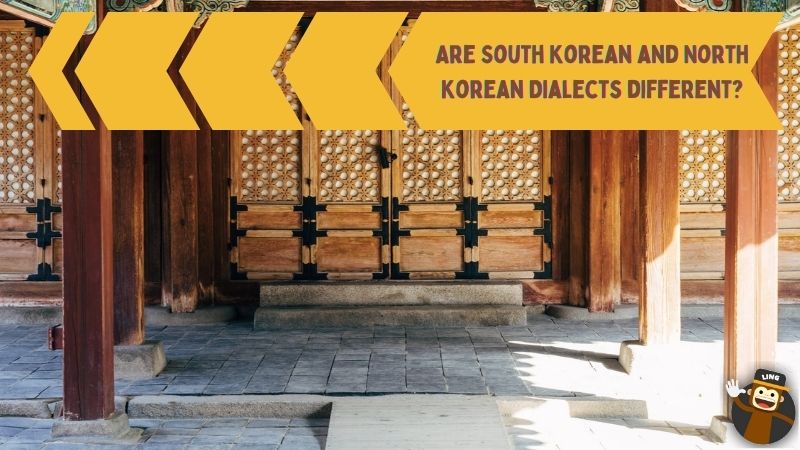
It is essential to know about the difference between the language spoken in South and North Korea. It gives a deeper understanding of the dialects in South Korea nowadays. These differences are measured on two major constructs: verbal and written.
Verbal (Spoken Dialects)
After the Korean war, the Korean peninsula was split into two parts after being together for a long time. Koreans have always been under the thumb of more powerful nations such as China, Japan, Russia, and the USA.
The Korean language has developed differently due to the influence of all these nations. After the split, both the regions decided to take different paths to approach their language development.
Major Differences
As both the North and South Korea regions have different dialects, the Korean spoken in both areas is different. There is a distinction in pronunciations when it comes to vowels and consonants.
Some words and sentences are pronounced differently, too. In addition, there is a difference in pitch while pronouncing the words. You can see these diverse dialects manifested in K-drama.
Different Pronunciations
The Chinese characters used in the Korean language called “Hanja” have different pronunciations in North and South Korea. The Seoul dialect from South Korea is more widely known internationally, and its pronunciation is more widely accepted than any other dialect.
Are The Dialects Mutually Intelligible?
It is easy to understand the pronunciations of both countries if you speak Korean fluently, and it is okay for a person to talk about any dialect when having a casual conversation. Still, formal translators should be aware of the intricate differences between pronunciations and usage of different words as it can affect the literal translation into other languages.
Written (Textual Dialects)
You have probably noticed that Korean is written in a block. Inside that block, you see letters that become organized as a written system. The North and the South share that same system, called “Jamo.”
However, some vowels and consonants are considered separate letters in North Korea compared to South Korea, in which they are connected as the same letter.
Other than that, some words are entirely different in both regions, and the pairing of words might be distinct too when forming a sentence. It is one of the reasons why the two dialects aren’t similar in writing.
It is also why someone who has just started learning Korean might get confused by seeing Korean written differently in different regions (not just in North and South Korea, but also inside South Korea). It takes some time to get used to the differences in writing patterns between North and South Korea.
North Korea has also tried to add as many pure Korean words as possible and reduce the number of words borrowed from the Chinese language.
Korean Language And Its Dialects
The Korean language in South Korea is known as “한국어 (hangug-eo).” While the language in North Korea is known as “문화어 (munhwa-eo).”
In South Korea, you will often listen to people talking in the Seoul dialect, which is the primary one used in the country. Seoul is the capital and the biggest city in South Korea.
Many cultures have influenced Korean culture in the past, the same way Korean spoken in South Korea has been influenced by the English language. It has adopted some words to make modern-day Korean spoken casually.
The differences between the North and South Korean languages could be seen as differences between the English language dialects spoken in Birmingham and Manchester. The accents and pronunciations are very different.
Dialects In South Korea
Each dialect of the country is unique in its way. These different accents are called “Satoori” (사투리) in Korean. Sometimes the dialects even have different grammar rules, but generally, these are similar.
As a foreigner going to Korea, it is hard to distinguish between the different accents and dialects spoken. To make it easier to understand, let’s go over some of the local dialects of South Korea and the key differences that make them unique.
Gyeonggi Dialect (경기 방언)
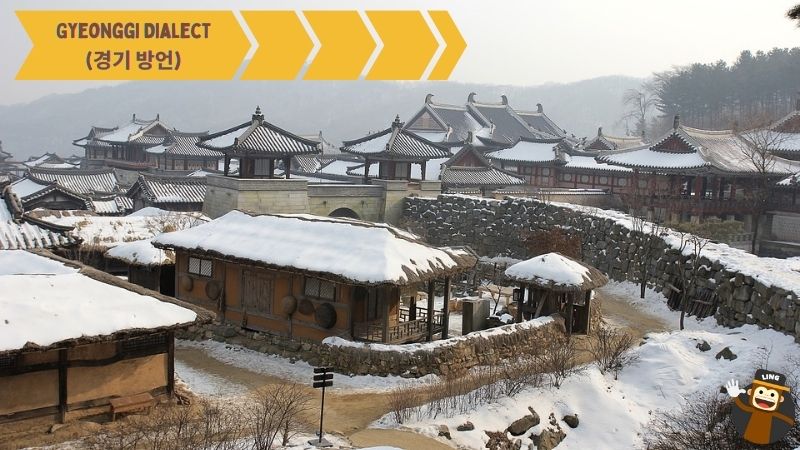
Gyeonggi Dialect (경기 방언), or the Seoul dialect, is the most widespread across the country. The international viewers of Korean dramas are most familiar with it as it is widely used in movies, tv shows, News, and Radio stations.
It would be hard to find someone in Korea who doesn’t understand this dialect, regardless of where they are. Although, it is more concentrated in areas of Incheon and Seoul.
As a fun fact, if you travel to Korea as a language student, even if you study in Busan, your teachers will, most likely, teach you the Seoul standard dialect and not their own Busan dialect.
The native speakers of this accent are pretty mellow in their tone, and you can’t expect much change in their pitch while speaking it. It could be hard to judge a person’s mood from a foreign listener.
Gangwon Dialect (강원 방언)
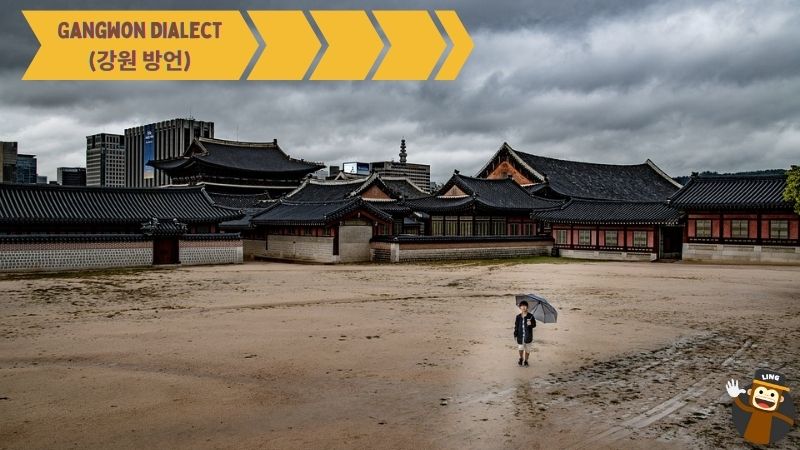
Gangwon Dialect (강원 방언) is spoken in Gangwon province, which is located in the northeast of the country. It’s a beautiful and calm place with many trees and mountains.
Because it is closer to Seoul, the difference in dialects is not drastic. Here are some of the most prominent features of Gangwon Dialect (강원 방언):
Changing Endings
The endings of the sentences usually have 나, -노, -고, -가 in them. If the sentence has ㅏ (a) as an ending, it must be changed toㅓ(eo).
Pronouncing ㅆ (ss) As ㅅ (s)
In Gangwon Dialect (강원 방언), ㅆ (ss) is pronounced as ㅅ (s). To native Korean speakers, it makes a lot of difference in how words sound.
Chungcheong Dialects (충청 방언)
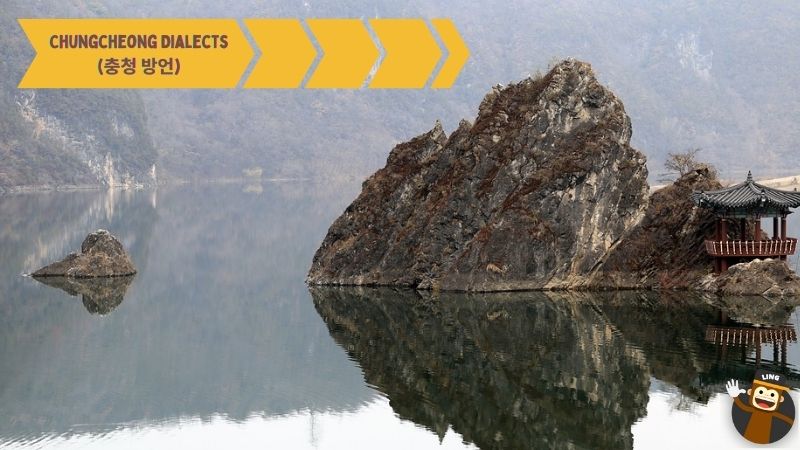
Chungcheong Dialect (충청 방언) is again very similar to the other dialects. It’s mainly spoken in rural areas, including the Chungcheon region. Other than that, you can also hear it in the metropolitan city of Daejeon.
In addition, it holds some influence in the surrounding areas of Chungcheon province, including Gyeonggi Province.
This dialect can be divided into two parts. The Southern Chungcheon dialect (충청 방언) resembles the Jeolla dialect, and the Northern dialect is quite similar to the Gyeonggi region speech.
These are often not spoken by young people and are limited to older inhabitants. The younger people (generally fond of K-pop) say a more Seoul-influenced version of it because of the popularity of Seoul’s dialects.
If you learn any other Korean dialect, it wouldn’t be an issue to understand this one as it is pretty similar to the rest. Here are the main characteristics.
Changing Sentence Endings
The sentence ending in Chungcheong Dialects (충청 방언) are changed from 야 to 여. For instance, the word 아니야 (aniya) which means “no/not” becomes 아니여 (aniyeo). You should know that it changes the pronunciation only; the meaning stays the same.
Changingㅐ(ae)/ㅔ(e)toㅑ(ya)
The first major characteristic of Chungcheong dialects is Changingㅐ(ae)/ㅔ(e)toㅑ(ya).
Jeju Dialect (제주 방언)
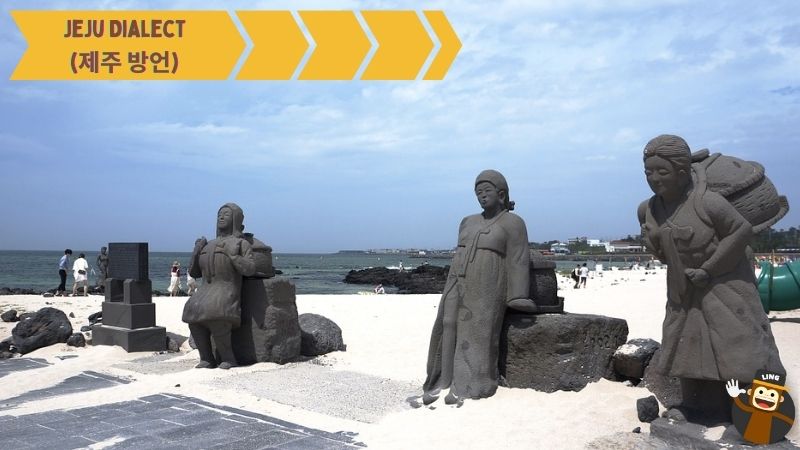
Jeju dialect (제주 방언) is the most different and is widely spoken in Jeju Island and neighboring areas. There are influences in this dialect from Mongolian and Japanese.
It is so drastically different from what the Korean government considers to be a new language because mainland Korean and Jeju language aren’t mutually intelligible.
It resembles the Gyeongsang dialect in difficulty. That’s why teenagers do not prefer it. If you come across young Jeju inhabitants, you might think they speak different dialects.
Also, politeness holds less value in this dialect. So, if you come across older people of Jeju and find them rude, trust me, they are not. It’s just how Jeju is spoken in the region.
Teaching the characteristics of the Jeju dialect (제주 방언) might be challenging because it is extremely completely different from the standard Korean language.
Jeolla Dialect (전라 방언)
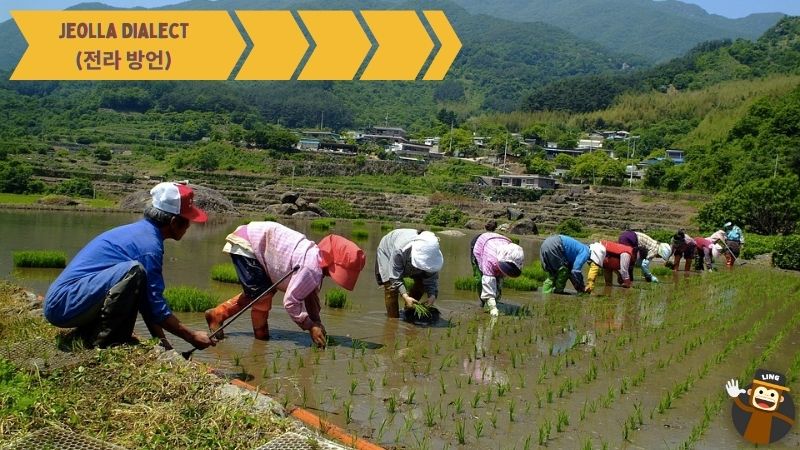
It is commonly spoken in the Southwestern Parts of Korea. It is spoken in Jeolla Province, Chungcheong province (mainly the southern regions), and Gwangju.
It is an old dialect with its unique accent of Baekje’s language, which was coined during the reign of old Barkje’s kingdom.
Jeolla (전라) has a smooth accent which can be assertive at times. It can be pretty menacing at first, but it starts sounding similar to other local dialects once you get used to it. When the words are being pronounced, it gives a longer dragging sound to vowels. It is a smart way to highlight the main word in a sentence.
A different way to separate the Jeolla (전라) dialect from other Korean dialects is to look at the ending of a sentence. Standard Korean has distinct endings with unique sounds like “da” and “gi.” But when we talk about Jeolla (전라) dialect, the end of the sentence is dragged.
Major Regions
Jeolla (전라) Dialect is spoken differently by South Koreans and North Koreans within South Korea (eastern and western parts). Different dialects of the same dialect are noticed.
Jeolla (전라) Dialect spoken in Namwon (남원), Jinan (진안), Imsil (임실), Muju (무주), Jangsu (장수) and Sunchang (순창) which are the Eastern parts of South Korea is different from Okgu (옥구), Wanju (완주), Iksan (익산), Gochang (고창), Gimje (김제), Jeongeup (정읍), and Buan (부안) which comprise the western part of South Korea.
Here are some of the ways that you can speak the Jeolla (전라) dialect:
Having Different Interjections
There are different interjections in this dialect compared to the dialect of the official language spoken in South Korea. Here are some examples
- 그래서 (geureaseo) is 근디 (geunda)
- 어머 (eo-meo) is 오메 (o-ma) or 왐마 (wam-ma)
- 어떻하지 (eotteoh-haji) is 어찌아스까나 (eojjiaaseukkana)
- 저기요 (Jeogiyo) is 아야 (aaya)
Adding Different Syllables
There are several syllables added in this dialect. Most of them are 부러 (bora), 잉 (eeng), and 쟤 (jae). There are also other syllables, but these are the most common ones.
Gyeongsang Dialects (경상 방언)

This dialect is more commonly used by the natives and is considered straightforward or rude by some people. The sentences are considerably shortened, and as a foreigner in Korea, you might have difficulty understanding this dialect. It is modified slightly to make it seem less rude.
Other than that, for native speakers, it is pretty easy to comprehend. In the Gyeongsang dialect, you make the following changes.
Changing Vowels
The first change noticed in the Gyeongsang dialect is changing the vowel. Here is a quick fix for memorizing if you ever wish to speak this dialect.
- Change 의 to 에
- Change ㅚ to ㅐ
- Change 그 to 거
- Change 으 to 어
- Change ㅟ toㅣor ㅡ
Changing Questions
Interrogative sentences or the questions in this dialect are also changed. Here is the quick formula for you to remember: Change 니 to 가, 노, 나, or 고.
Changing The Sentence Length
You also change the length of the sentences. It means that the sentences become shorter than they usually are. For example, 뭐라고 했니? (mwolago haessni?) meaning “What did you say?” becomes 뭐라카노? (mwolakano?).
Changing Sentence Endings
In this dialect, the sentences which generally end in 다 (da) are changed to 데이 (daei). For instance, the sentence 내가 여기 있다 (naega yeogi issda) which means “I am here,” becomes 내가 여기 있데이 (naega yeogi issdaei).
Learning Korean Made Easy!

I hope that you know the difference between all the dialects of South Korea by now. It might be challenging initially, but once you get the hang of it, it will become a piece of cake for you to talk or at least understand any dialect of South Korea.
Find your heaven at Ling App for more informative lessons about the Korean language. Ling app is coming up with new ways to teach different languages to each person every day.
Besides teaching the standard language/modern Korean and basic vocabulary, it also provides insight into the cultural elements of South Korea, thus increasing your knowledge with each passing second.
Download the app and start learning Korean today!



















